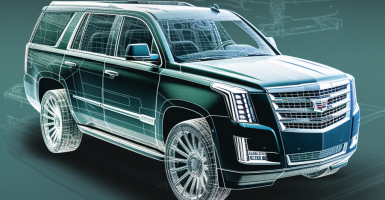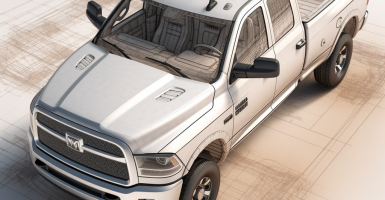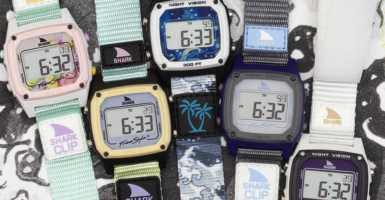If You Grew Up In The 1960s These Photos Will Take You Back To The Past
Life has changed quite drastically since the 1960s. While there has been much progress and many successes, there have also been some failures. Regardless, mankind continues to press on. While many of the traits that make us human remain the same, the world is almost unrecognizable from what it used to be.
Today, we can see and talk to each other while thousands of miles away, find the answer to any question in a few seconds, and we now know more about the world around us than ever. Keep reading to learn what it was like to live over half a century years ago.
You Had To Go To The Bank To Get Money

While today we have the options of using an ATM or even online banking, that wasn’t the case in the 1960s. If you needed to do anything that involved finances, you had to go to the bank and talk to a bank teller.
Although Barclays introduced the world’s first automated teller in London in 1967, it didn’t make its way to the United States until 1969. Imagine having to wait in line at the bank every time you need to pull out a little bit of cash. No thank you.
There Were No ‘R’ Rated Movies

Not only were there no ‘R’ rated movies, but there was no established way to rate the content of movies at all. It wasn’t until November 1, 1968, that the voluntary Motion Picture Association of America (MPAA) rating system replaced the all-or-nothing Motion Picture production Code with designations of either G, M, R, or X.
Before this code was established, there was no way to judge whether a movie was okay for certain age groups.
Seatbelts Were Optional

Since the invention of the automobile, countless older cars didn’t even offer seatbelts. However, in 1968, the first federal seatbelt law was put into place. This required that all new cars were to have a seatbelt for each passenger seat.
Even so, it would still be decades until drivers and passengers were required by law to wear a seatbelt. New York was the first state to require people to wear them on December 1, 1983. Before that, it was more or less a personal decision to use one.
911 Didn’t Exist

Today, even the youngest children know to call 911 in the event of an emergency. It’s a quick and simple way to get help fast and has saved countless lives over the years. Now, imagine a time when 911 wasn’t even an option in case of an emergency.
The single, nationwide phone number for emergency help wasn’t established until 1968. After a meeting between the FCC and AT&T it was decided that 911 would be the digits because they had never been used as an area code or other service code.
The Drinking Age Was 18

There’s an ongoing argument today that you should be allowed to drink if you’re old enough to be a legal adult, vote, and fight in wars. Well, in the 1960s, that was the United State’s logic as well. Eighteen-year-old citizens could enjoy alcoholic beverages carefree until Congress passed the National Minimum Drinking Age Act on July 17, 1984.
You have to imagine how difficult that must have been for some young adults who had their alcohol privileges taken away right out from under them.
Heart Transplants Were Out Of The Question

Back in the 1960s, you were out of luck if you had a serious heart condition and needed something like a heart transplant. The kind of technology needed for that kind of operation wasn’t available at that time.
Although Christiaan Barnard, a South African cardiac surgeon, completed the first successful heart transplant in 1967, the first one in the United States took place at Stanford University Hospital the following year. Around 100 heart transplants took place over the course of that year, with only a third of them being effective for more than three months
There Was A Designated Area To Talk On The Phone

While we may be used to being able to communicate or talk on the phone at any given place or time, this is a luxury that has only been around for a few decades. Back in the 1960s, phones were stationary in a household and most families only had one.
This meant that you had to either sit and wait for a call and once you started talking to someone, you sure weren’t moving around. The cordless phone prototype was invented in 1965 although it didn’t become popular for residential use until the 1980s.
Phones Were Completely Different

Seeing a phone from the 1960s makes iPhones look like magical devices. Back then, dialing involved clockwise finger rotation by sticking your finger in the hole and turning it until engaged the number, then waiting for it to rotate back. There was no Siri to lend you a hand, that’s for sure!
Not only did this take patience, but skill for those who needed to do it quickly. Good thing that local calls were only seven digits, as calling someone in the same area didn’t require an area code until the early 2000s.
Getting A Credit Card Was Easier Than Ever

Today, applying for a credit card can be a painful process with many applicants even getting denied. But it was a lot different in the 1960s. In many cases, many credit card companies opened credit cards without the recipient’s consent.
Consumers were mailed active credit cards and it was up to them if they wanted to use them or not. However, the Unsolicited Credit Card Act of 1970 stopped that entirely. Now, having a credit card is a privilege that has to be earned.
Chicken Pox Was Deadly For Children

Today, many people have survived the chicken pox as a child, even those who had severe cases. In the 1960s, the now relatively harmless disease was known to kill 100 children or more in the United States alone.
Thankfully, the vaccine was discovered in 1995, while before, there were only lotions and rest that could help children suffering from the itchy disease. Also, other advances in medicine in the last several decades helped to reduce the death toll of chicken pox years before the vaccine.
Catholics Were Okay With Contraceptive Pills

Although in the recent past the use of contraceptives has been a heavily debated subject in the Catholic Church, surprisingly enough, in the 1960s it wasn’t as big a deal. While this may sound oddly progressive for the Catholic Church, Pope Paul VI hadn’t yet released his July 1968 report Humanae Vitae (On Human Life).
This report strongly enforced the church’s anti-contraceptive stance which other cardinals and bishops had fought against and voted to ease up on.
Cans Had Pull Tabs

In today’s world, most of us haven’t known anything over than the push-through tab on cans that stay attached after you open it. In the 1960s, it wouldn’t be uncommon to see pull tabs from cans littered all over the street.
This is because the pull tab would come completely off of the can and have to be thrown away separately. Cans were made in this fashion until littering became a massive issue and the push through tab was invented in 1975.
Playgrounds Were Far From Safe

Back in the days when kids were expected to be independent and play on their own, the playgrounds they used were not very safe. While today we have wood chips or turf beneath play structures, in the 1960s, many of them were built directly on concrete.
There were also metal slides that would get extremely hot and other dangerous equipment that has long been banned from being built on playgrounds. Injuries at the playground were not rare — not always minor, either.
Building Regulations Were A Lot Different

Today, we know that substances such as asbestos and lead-based paint can be extremely dangerous to work with or even be around. However, before people knew the dangers of these kind of materials, they used them freely when building or repairing structures. Asbestos was used frequently and children painted with lead-based paints like they were watercolors.
The EPA’s ban on asbestos-laden fireproofing and other installation didn’t even go into effect until 1973. Now, people are working to undo all these building mistakes made in the past.
Children Didn’t Have To Use Car Seats

Today, most parents wouldn’t even think about putting the keys in the ignition without having their child in a specialized car seat. Of course, in the 1960s, parents didn’t find this to be a necessity. Most cars didn’t even have safety belts to use, so why would they need a car seat?
It wasn’t until 1971 that the National Highway Traffic Safety Administration began requiring that all seats be held by safety belts in order to keep a child in place. Since then, car seats have become more and more advanced to provide as much safety as possible.








